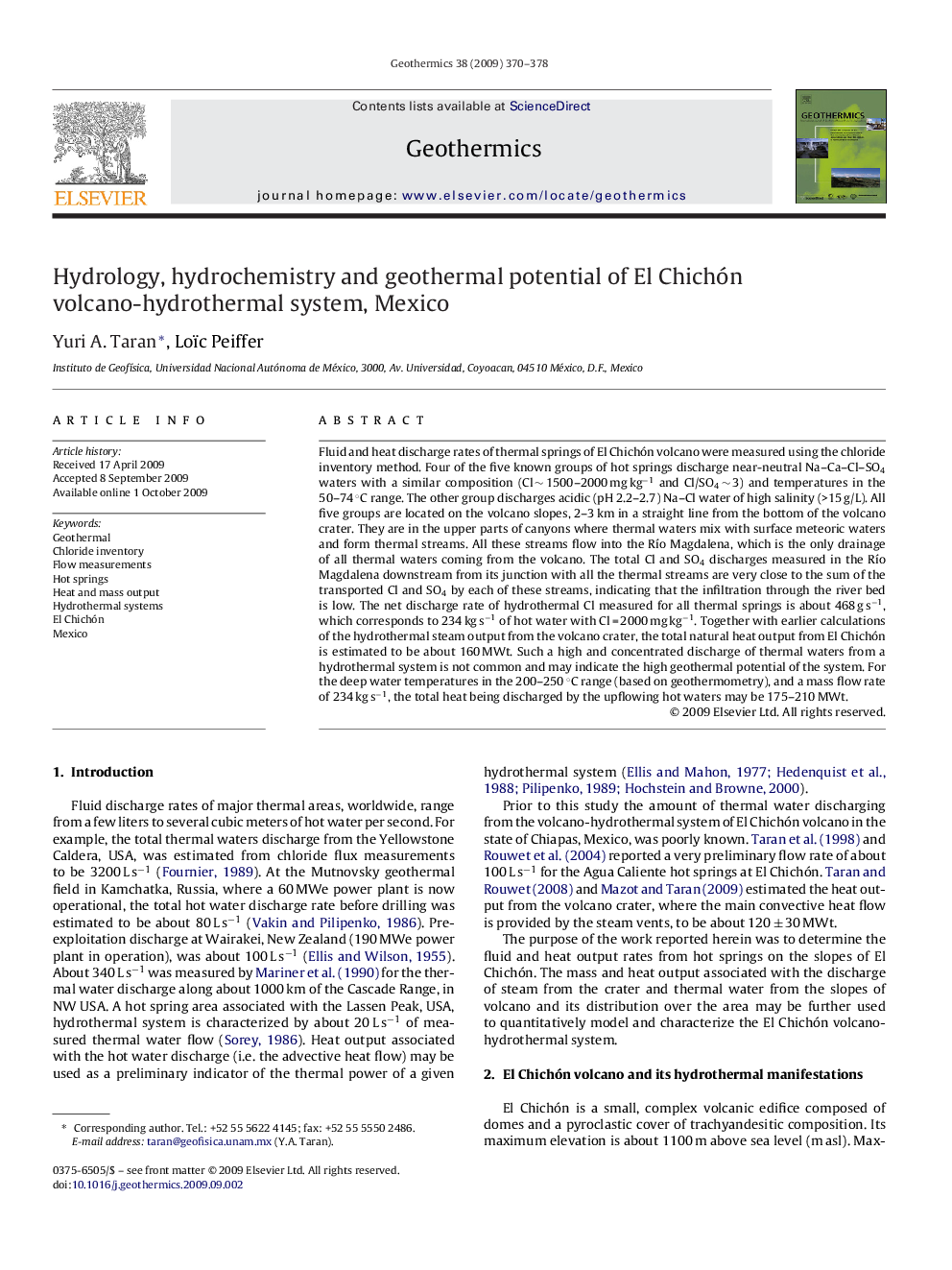| Article ID | Journal | Published Year | Pages | File Type |
|---|---|---|---|---|
| 1742647 | Geothermics | 2009 | 9 Pages |
Abstract
Fluid and heat discharge rates of thermal springs of El Chichón volcano were measured using the chloride inventory method. Four of the five known groups of hot springs discharge near-neutral Na-Ca-Cl-SO4 waters with a similar composition (Cl â¼Â 1500-2000 mg kgâ1 and Cl/SO4 â¼Â 3) and temperatures in the 50-74 °C range. The other group discharges acidic (pH 2.2-2.7) Na-Cl water of high salinity (>15 g/L). All five groups are located on the volcano slopes, 2-3 km in a straight line from the bottom of the volcano crater. They are in the upper parts of canyons where thermal waters mix with surface meteoric waters and form thermal streams. All these streams flow into the RÃo Magdalena, which is the only drainage of all thermal waters coming from the volcano. The total Cl and SO4 discharges measured in the RÃo Magdalena downstream from its junction with all the thermal streams are very close to the sum of the transported Cl and SO4 by each of these streams, indicating that the infiltration through the river bed is low. The net discharge rate of hydrothermal Cl measured for all thermal springs is about 468 g sâ1, which corresponds to 234 kg sâ1 of hot water with Cl = 2000 mg kgâ1. Together with earlier calculations of the hydrothermal steam output from the volcano crater, the total natural heat output from El Chichón is estimated to be about 160 MWt. Such a high and concentrated discharge of thermal waters from a hydrothermal system is not common and may indicate the high geothermal potential of the system. For the deep water temperatures in the 200-250 °C range (based on geothermometry), and a mass flow rate of 234 kg sâ1, the total heat being discharged by the upflowing hot waters may be 175-210 MWt.
Related Topics
Physical Sciences and Engineering
Earth and Planetary Sciences
Geochemistry and Petrology
Authors
Yuri A. Taran, Loïc Peiffer,
